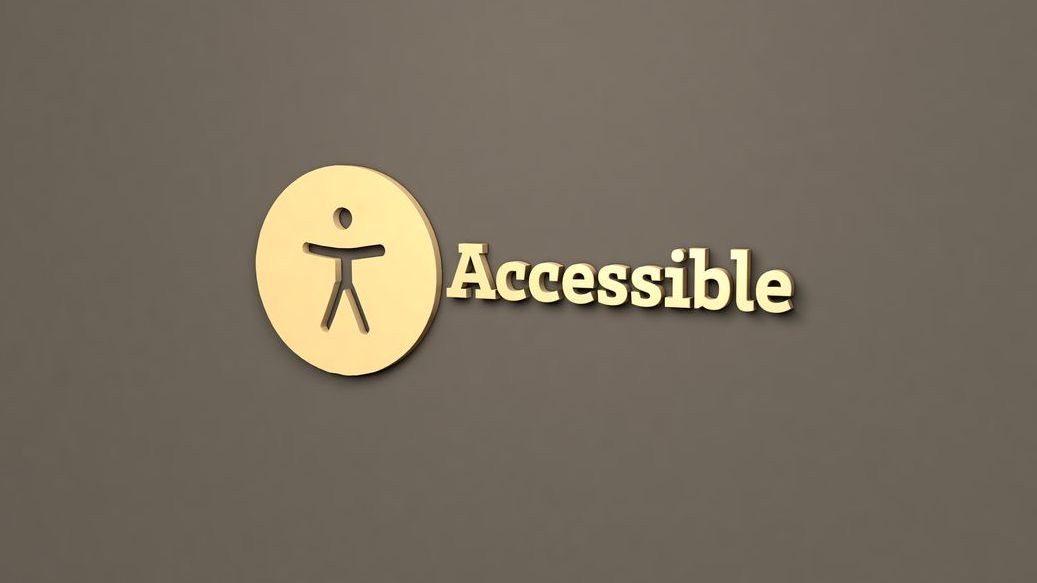In today’s digital workplace, accessibility has moved from a nice-to-have feature to an essential requirement for enterprise systems. Alternative text (alt text) for visual elements stands at the forefront of this accessibility revolution, particularly for scheduling software used across organizations. When properly implemented, alt text ensures that employees with visual impairments can fully engage with visual content through screen readers and other assistive technologies. For enterprise and integration services focusing on workforce scheduling, implementing comprehensive alt text strategies not only fulfills legal obligations but also creates truly inclusive workplace experiences that benefit all employees.
Organizations using employee scheduling software need their visual interfaces—from shift calendars and availability charts to team performance dashboards—to be accessible to every team member regardless of ability. Proper alt text implementation becomes crucial in these enterprise environments where complex visual data frequently drives decision-making. As businesses increasingly recognize the importance of digital accessibility, scheduling software providers like Shyft are integrating robust alt text frameworks into their platforms to ensure everyone can participate equally in the workforce management process.
Understanding Alternative Text in Enterprise Scheduling Systems
Alternative text serves as a textual replacement for visual elements for users who cannot see images. In enterprise scheduling contexts, these visuals might include shift availability charts, employee performance graphs, or calendar interfaces. A well-crafted alt text strategy helps organizations meet both legal requirements and usability needs while building a more inclusive workplace culture. Companies implementing ADA-compliant scheduling systems recognize that proper alt text isn’t just about compliance—it’s about ensuring equal access to critical workplace information.
- Screen Reader Compatibility: Alt text enables screen reading software to verbalize visual content for users with vision impairments.
- Equal Information Access: Properly described visuals ensure all employees receive the same critical scheduling information.
- SEO Benefits: Well-crafted alt text improves search engine optimization for web-based scheduling platforms.
- Backup Information: Alt text provides context when images fail to load due to connectivity issues or technical problems.
- Compliance Foundation: Effective alt text forms the foundation of ADA and WCAG 2.1 compliance for digital scheduling systems.
When implementing alternative text for scheduling interfaces, organizations should focus on clarity, accuracy, and relevance to ensure all users can understand the information being presented. This is particularly important for healthcare and other regulated industries where scheduling precision directly impacts operations and compliance requirements.
Legal Requirements and Compliance Standards for Alt Text
Multiple legal frameworks dictate the accessibility requirements for enterprise software, including scheduling systems. Organizations implementing workforce management solutions must understand these requirements to ensure their systems remain compliant and truly accessible. The legal compliance landscape for digital accessibility continues to evolve, with increasing emphasis on visual content being properly described for users with disabilities.
- Americans with Disabilities Act (ADA): Though initially created before the digital age, courts have consistently interpreted the ADA to apply to digital content, including scheduling software interfaces.
- Section 508: Federal agencies and organizations receiving federal funding must make their electronic information accessible to people with disabilities, explicitly requiring alt text for images.
- Web Content Accessibility Guidelines (WCAG) 2.1: The internationally recognized standard requires alt text for non-text content (Success Criterion 1.1.1, Level A).
- EN 301 549: The European accessibility standard incorporates WCAG requirements and applies to enterprise software systems.
- State-Specific Requirements: Some states have enacted their own digital accessibility laws that may affect enterprise scheduling systems.
Businesses implementing scheduling solutions across different regions may need to comply with multiple regulatory frameworks. Compliance training for development and content teams should include specific guidance on alt text requirements for scheduling interfaces to ensure consistent implementation across the organization.
Best Practices for Writing Effective Alt Text in Scheduling Interfaces
Creating effective alt text for scheduling interfaces requires a balance between being descriptive and concise. The goal is to provide equivalent access to the information conveyed by visual elements without overwhelming the user. Organizations implementing interface design best practices should integrate alt text creation into their development workflows from the beginning, rather than treating it as an afterthought.
- Be Specific and Contextual: Describe the purpose of the image in the context of scheduling, not just its visual appearance.
- Focus on Functionality: For interface elements like calendar views or availability charts, explain what information the visual conveys rather than its design.
- Include Key Data Points: For graphs or charts showing scheduling metrics, include the most important data points and trends in the alt text.
- Keep It Concise: Aim for 125 characters or less for simple images, though complex data visualizations may require longer descriptions.
- Avoid Redundancy: Don’t repeat information that’s already provided in surrounding text or labels.
Different types of scheduling visuals require different approaches to alt text. For instance, a shift calendar might focus on describing available slots and assigned personnel, while a performance dashboard might emphasize key metrics and trends. Companies implementing team communication tools should ensure alt text conveys the same information that visual users would gain at a glance.
Implementing Alt Text for Complex Scheduling Visualizations
Scheduling software often incorporates complex data visualizations that present unique challenges for alt text implementation. These may include heat maps showing peak scheduling times, comparative charts of scheduling efficiency across departments, or interactive calendars with multiple data layers. For retail and hospitality businesses with fluctuating staffing needs, these visualizations are particularly important for effective workforce management.
- Structured Descriptions: For complex charts, structure alt text to first provide an overview, then key data points, and finally any important trends or anomalies.
- Progressive Disclosure: Consider implementing expandable descriptions where users can access increasing levels of detail as needed.
- Data Tables as Alternatives: For highly complex visualizations, provide accessible data tables as an alternative to graphical representations.
- Contextual Relevance: Focus on aspects of the visualization most relevant to scheduling decisions, such as understaffed periods or availability conflicts.
- User-Centered Descriptions: Consider different user roles and what information each needs from the visualization when crafting alt text.
For organizations implementing reporting and analytics in their scheduling systems, alt text for these complex visualizations should be regularly reviewed and refined based on user feedback. This ensures that the information remains equally accessible to all users regardless of their visual abilities.
Testing and Validating Alternative Text in Enterprise Applications
Thorough testing of alt text in scheduling applications is essential to ensure it actually provides equivalent access for all users. This testing should go beyond simple compliance checking to include real-world usability by people with different abilities. Companies focused on evaluating system performance should include accessibility metrics as key performance indicators for their scheduling platforms.
- Screen Reader Testing: Test with multiple screen readers (JAWS, NVDA, VoiceOver) to ensure alt text is properly announced and provides adequate context.
- User Testing with People with Disabilities: Include users with visual impairments in your testing protocols to gather real-world feedback.
- Automated Testing Tools: Use tools like axe, WAVE, or Lighthouse to identify missing or inadequate alt text.
- Compliance Validation: Verify that alt text meets WCAG 2.1 requirements and other applicable standards.
- Contextual Validation: Check that alt text effectively conveys the same information and functionality that visual users receive.
Testing should be conducted at multiple stages of implementation, not just at the end of development. Organizations implementing accessibility compliance measures should establish regular audit schedules to ensure that alt text remains effective as the scheduling application evolves and new features are added.
Integrating Alt Text Across Multi-Platform Scheduling Environments
Most enterprise scheduling systems today operate across multiple platforms—web interfaces, mobile apps, kiosk systems, and more. Ensuring consistent alt text implementation across all these touchpoints presents unique challenges that require thoughtful integration strategies. Organizations implementing integrated systems need coordinated approaches to alt text that maintain quality across all platforms.
- Centralized Content Management: Store alt text in a central repository that feeds all platforms to ensure consistency.
- Responsive Considerations: Adapt alt text based on screen size and context while maintaining the core information.
- Cross-Platform Testing: Validate alt text functionality across all devices and platforms where scheduling information is accessed.
- API Requirements: Include alt text fields in APIs that serve scheduling data to ensure accessibility across integrated systems.
- Third-Party Integration Guidelines: Provide clear alt text requirements for third-party components that integrate with your scheduling system.
The rise of mobile experience in scheduling software makes cross-platform alt text consistency particularly important. Employees may switch between desktop and mobile interfaces throughout their day, and the alt text experience should remain seamless across these transitions to maintain usability for all team members.
Training Teams on Alt Text Implementation for Scheduling Software
Successfully implementing alt text across scheduling platforms requires organization-wide education and training. From developers and designers to content creators and administrators, everyone involved in the scheduling ecosystem needs to understand the importance of alt text and how to implement it effectively. Organizations can leverage training programs and workshops to build this knowledge across their teams.
- Role-Specific Training: Provide tailored training for different team members based on their responsibilities in the alt text creation process.
- Hands-On Workshops: Conduct practical sessions where team members practice writing effective alt text for scheduling visuals.
- Accessibility Champions: Designate accessibility advocates within each team to provide guidance and review alt text quality.
- Regular Refreshers: Schedule periodic training updates to address new best practices and changing requirements.
- Development Guidelines: Create clear documentation and style guides for alt text implementation in scheduling interfaces.
For businesses implementing accessibility in the workplace, training should extend beyond technical teams to include managers and end-users. This helps create a culture where accessibility is valued and reinforced throughout the organization, leading to better implementation and maintenance of alt text standards in scheduling systems.
Alt Text Automation and AI Tools for Enterprise Scheduling
As scheduling systems grow more complex, many organizations are turning to automation and AI to help generate and manage alt text at scale. These tools can help maintain consistency and reduce the manual workload of creating alt text for numerous visual elements across enterprise scheduling platforms. Companies implementing artificial intelligence and machine learning in their workforce management systems can extend these capabilities to accessibility features.
- Computer Vision APIs: Services like Microsoft’s Computer Vision or Google’s Cloud Vision can automatically generate descriptive text for images.
- Context-Aware Generation: Advanced AI tools can create alt text that considers the scheduling context in which an image appears.
- Data-Based Descriptions: For data visualizations, automated tools can extract key data points to include in alt text.
- Quality Assurance Tools: AI-powered validation can check alt text quality and suggest improvements.
- Template Systems: Semi-automated approaches using templates can ensure consistency while maintaining quality.
While automation offers significant benefits, human oversight remains essential. Organizations implementing integration technologies should view AI-generated alt text as a starting point that may require human refinement, especially for complex scheduling visualizations where context and relevance are crucial for understanding.
Measuring the Impact of Alt Text on Scheduling Software Usability
To justify ongoing investment in alt text implementation, organizations need to measure its impact on overall system usability and accessibility. Gathering both quantitative and qualitative data helps demonstrate the value of proper alt text in scheduling interfaces and identifies areas for improvement. Companies focused on user interaction should incorporate accessibility metrics into their overall usability evaluation strategy.
- User Satisfaction Surveys: Collect feedback specifically about the accessibility of visual information from users with disabilities.
- Task Completion Rates: Compare how effectively users with visual impairments can complete scheduling tasks compared to sighted users.
- Error Rates: Track scheduling errors or misunderstandings that might result from inadequate alt text.
- Time-on-Task Metrics: Measure whether proper alt text reduces the time required for users with disabilities to complete scheduling actions.
- Employee Inclusion Metrics: Track participation rates of employees with disabilities in scheduling activities.
For enterprise deployment of scheduling solutions, demonstrating the business value of accessibility features like alt text can help secure ongoing resources for these initiatives. Organizations should establish baseline measurements before implementing alt text improvements, then track changes in metrics over time to quantify the impact.
Future Trends in Alt Text for Enterprise Scheduling Systems
The evolution of technology continues to transform how alternative text is created, implemented, and experienced in enterprise scheduling systems. Forward-thinking organizations should monitor these trends to stay ahead of accessibility requirements and user expectations. Companies implementing future trends in time tracking and payroll should incorporate emerging alt text technologies into their roadmaps.
- Personalized Alt Text: Systems that adapt descriptions based on user preferences, role, and access needs.
- Real-time Generation: Dynamic alt text that updates automatically as scheduling data changes.
- Multimodal Alternatives: Beyond text, providing audio descriptions or tactile feedback for scheduling visualizations.
- Natural Language Processing: More conversational, human-like descriptions of visual scheduling elements.
- Standardized Metadata: Industry-specific alt text frameworks for common scheduling visualizations.
As advanced features and tools continue to transform workforce scheduling systems, accessibility features like alt text will need to evolve in parallel. Organizations that anticipate these developments and build flexible accessibility frameworks will be better positioned to maintain compliance and usability as technology changes.
Conclusion: Creating a Fully Accessible Scheduling Environment
Alternative text for visual elements represents a foundational component of accessibility in enterprise scheduling systems. When implemented thoughtfully and consistently, alt text ensures that all employees can access the same scheduling information regardless of visual ability. This creates a more inclusive workplace while also helping organizations meet legal requirements and improve overall user experience. By integrating alt text best practices into their development processes, organizations using Shyft and other scheduling platforms can build truly accessible workforce management systems that serve all team members equally.
The journey toward fully accessible scheduling systems requires ongoing commitment from leadership, technical teams, and content creators. By staying current with accessibility standards, investing in proper training, and measuring the impact of accessibility features, organizations can create scheduling environments that work for everyone. As technology continues to evolve, maintaining this commitment will ensure that visual elements in scheduling systems never become barriers to full participation in the workplace for employees with disabilities.
FAQ
1. What is alternative text and why is it critical for scheduling systems?
Alternative text (alt text) is a written description of visual elements that allows users who cannot see images to understand the content through screen readers and other assistive technologies. For scheduling systems, alt text is critical because it ensures all employees can access important visual information like shift calendars, availability charts, and performance dashboards. Without proper alt text, employees with visual impairments may miss crucial scheduling information, creating an uneven playing field and potential legal liability for employers. Additionally, well-implemented alt text improves general usability, helps with SEO for web-based scheduling platforms, and provides backup information when images fail to load properly.
2. How should alt text differ for various types of scheduling visualizations?
Different types of scheduling visualizations require tailored approaches to alt text. For basic schedule calendars, focus on key information like assigned shifts, open slots, and time periods. For data visualizations like staffing heat maps, describe the overall pattern (e.g., “Heat map showing peak staffing needs on weekends between 4-8 PM”) and include critical data points. For employee availability charts, emphasize the availability status rather than the visual representation. For comparison graphs, highlight the primary relationship being shown (e.g., “Bar chart comparing overtime hours across departments, showing shipping with 40% more overtime than other departments”). The key is to focus on the functional purpose of each visualization type while ensuring the most important data points are communicated clearly.
3. What are the legal requirements for alt text in enterprise scheduling systems?
Enterprise scheduling systems must comply with several legal frameworks regarding alt text. In the United States, the Americans with Disabilities Act (ADA) has been interpreted by courts to apply to digital content, requiring equivalent access to information for people with disabilities. Section 508 of the Rehabilitation Act applies to federal agencies and organizations receiving federal funding, explicitly requiring alt text for images. Internationally, Web Content Accessibility Guidelines (WCAG) 2.1 serve as the technical standard, with Success Criterion 1.1.1 (Level A) specifically requiring text alternatives for non-text content. The European Union’s EN 301 549 incorporates similar requirements. Many countries have enacted their own digital accessibility laws based on these standards. Organizations operating across multiple regions need to comply with all applicable regulations, with the most stringent requirements typically setting the baseline for compliance.
4. How can organizations test if their alt text is effective for scheduling interfaces?
Testing alt text effectiveness requires both automated and manual approaches. Start with automated accessibility testing tools like axe, WAVE, or Lighthouse to identify missing alt text and basic issues. Follow with screen reader testing using multiple popular screen readers (JAWS, NVDA, VoiceOver) to verify how alt text is actually experienced by users. Most importantly, conduct user testing with people who have visual impairments and rely on assistive technologies in their daily work. Have them complete typical scheduling tasks and provide feedback on the clarity and usefulness of the alt text. Create test scenarios that represent real-world scheduling activities, such as checking availability, requesting time off, or analyzing staffing levels. Finally, implement a regular audit cycle to ensure alt text remains effective as the scheduling system evolves with new features and updates.
5. What role can AI play in creating alt text for scheduling visualizations?
AI is increasingly valuable for generating alt text for scheduling visualizations, though human oversight remains essential. Modern AI tools can automatically identify elements in images, describe basic visual characteristics, and even extract data points from charts and graphs. For scheduling systems, context-aware AI can be trained to recognize common visualization types like calendars, staffing charts, and availability indicators to generate more relevant descriptions. AI can also analyze historical scheduling data to identify and describe patterns or anomalies in visual representations. For organizations with large-scale scheduling systems, AI can handle the initial alt text generation while human reviewers refine the output for accuracy and relevance. The most effective approach combines AI efficiency with human judgment, using automation to handle routine descriptions while focusing human effort on complex or critical visualizations where context and nuance are essential.












